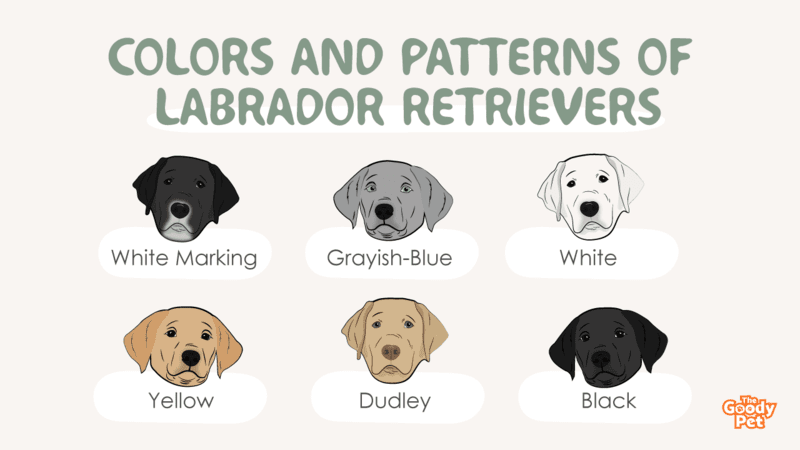When we think of Labrador Retrievers, the classic triad of black, yellow, and chocolate coat options. However, this popular dog breed actually comes in more colors and patterns than that.
Besides the common Black Labrador you normally see, there are actually 13 different aesthetic options Labrador Retrievers can come in, in terms of coat type, colors, and patterns. These include rarer variations like the Dudley Labrador and Merle Labrador variations.
In the sections below, we shall take a closer look at all these variations in terms of how to spot them and anything else that makes each unique. Before we get into the rainbow of color options that labs come in, let’s first get into the two main coat types.
13. Dudley

Dudley Labradors are a variation of the Labrador breed born without any pigment on their nose, eyes, or paw pads. These surfaces appear pink, red, or a very light shade of pinkish-brown.
Dudley Labradors are usually light-colored and may either be a very light shade of yellow or all-white. Their eyes are also a characteristically light shade of brown.
The genes responsible for the Dudley trait on Labradors are generally unproblematic. However, the lack of pigmentation leaves the nose of the Labrador exposed to sunburns.
12. Merle
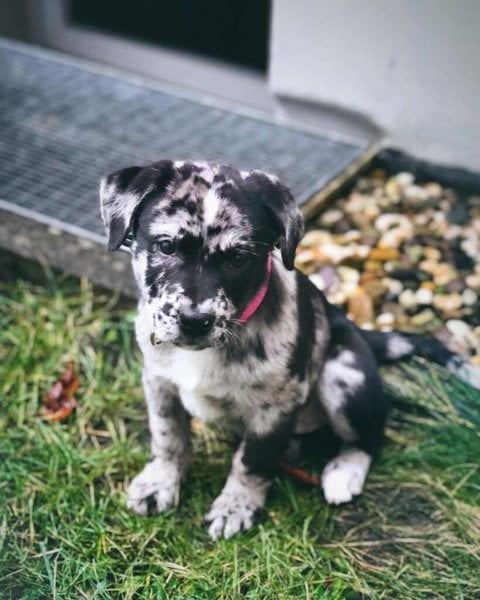
Merle Labradors are some of the most unique-looking dogs in general and not just in the Labrador breed. They can be recognized by the presence of dark, mottled patches on a white or other light-colored coat.
The patches on a Merle Labrador are of different sizes and distributed randomly.
The merle gene responsible for this trait also affects pigmentation and can give the Labrador blue eyes, especially if they are bred from two Merle Labs.
Unfortunately, the gene is also associated with eye and ear diseases which are also more commonly found in double-merle settings.
11. Black

Black Labrador Retrievers are the most common variety of the Labrador dog breed in terms of coat color.
What makes them common is the fact that there are several genetic combinations that give this trait. They are also unique in that Black Labrador puppies can result from breeding yellow or even chocolate-colored Labs.
Due to their wide availability, Black Labradors are arguably the most popular variation. They are also believed to be smarter and more hardworking than the other variations, even though there is no scientific basis for this.
10. Black And Tan

Black And Tan Labradors are actually purebred varieties of the Labrador breed. They have a predominantly black coat with tan markings.
The markings are usually distributed in a predictable manner over the body. This includes markings over the eyes, on the snout, neck, chest, and limbs.
Black And Tan Labradors can also be a result of mixed breeding with breeds like German Shepherds or Rottweilers. However, these will have mixed features and may not fully look like typical Labs.
9. Chocolate Or Brown
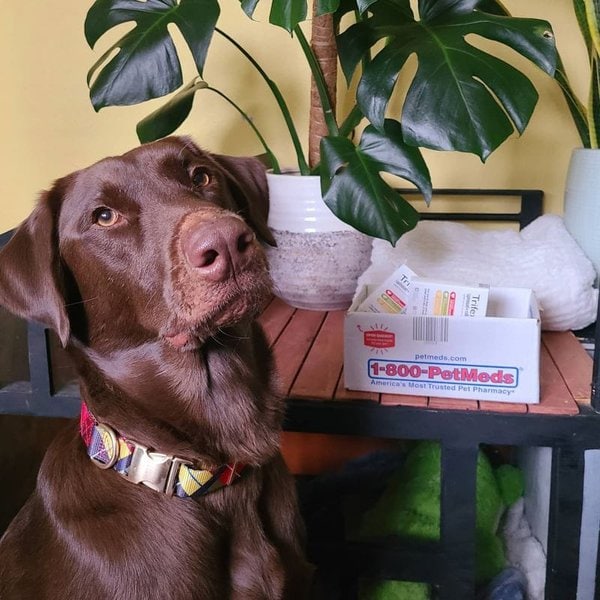
Chocolate is one of the 3 main recognized coat colors of the Labrador dog breed. It appears as a dark shade of brown, very similar to chocolate or liver. There shouldn’t be any other colored markings anywhere on the Chocolate Lab’s coat.
Among the 3 most acceptable Labrador colors, Chocolate Labs are the rarest. This is because the genetic combination responsible for the trait only appears rarely. Even with breeding between 2 Chocolate Labradors, there is always the risk the puppies may not all be chocolate.
8. Red

Technically speaking, Red Labradors, or sometimes Red Fox Labradors, are just a variation of the standard Chocolate Labrador. What makes them different is that their shade of chocolate brown is a bit lighter and has a rusty red quality to it.
In some cases, the shade is so light that they look almost earthy brown, like that of a fox. No matter how light or dark the shade of red is, it is important for it to be a solid color so that the Lab can be considered a true red variation.
Like Chocolate Labradors, the red variety also has a reddish-brown-colored nose.
7. Yellow
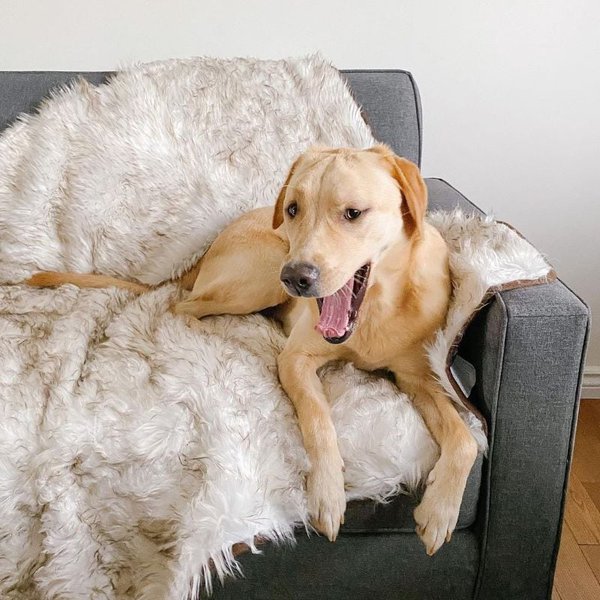
Yellow Labradors are the 3rd recognized color variation on our list. The shade of yellow varies from a rich, almost golden yellow to a light tinge of yellow that can easily be mistaken for white from a distance.
Long-haired, Yellow Labrador Retrievers are widely mistaken for Golden Retrievers. There are many ways to tell them apart, including the Lab’s wider skull and facial features. The shade of yellow on Yellow Labradors is also nowhere near as intense as that on Goldies.
6. White
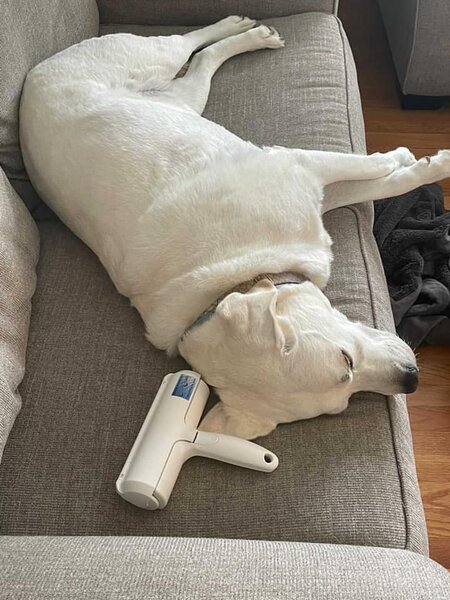
White Labradors have an entirely white coat. This is different from really pale Yellow Labradors, which may sometimes have more pigmented fur on the ears, paws, and snout.
Contrary to popular belief, White Labradors are actually not all suffering from albinism. They get their white coat from a rare and recessive leucistic gene. This causes the fur to be white while maintaining pigmentation of the Labrador’s eyes, nose pads, and paw pads.
5. Blue
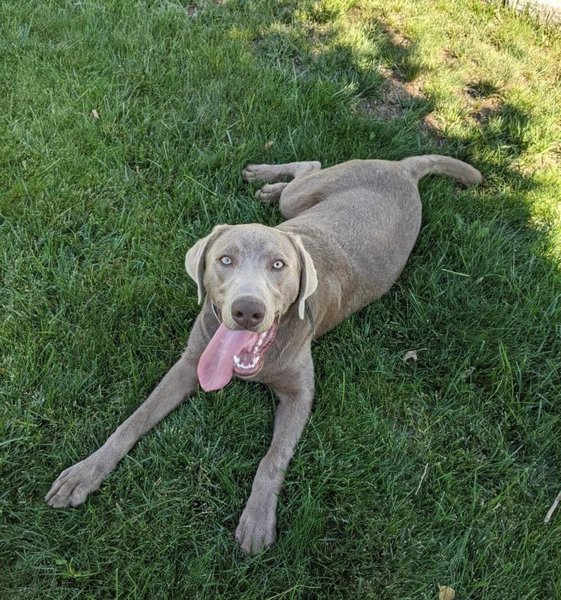
Blue Labradors are a variation of the common Black Lab. They get their grayish-blue shade from a dilution gene that waters down the intensity of what would have been a black coat.
This dilution gene on Blue Labradors affects not only the fur but also other black-pigmented surfaces like the nose. At first glance, it may appear black, but on closer inspection, you will notice even its nose has the same slightly watered-down shade.
4. White Markings
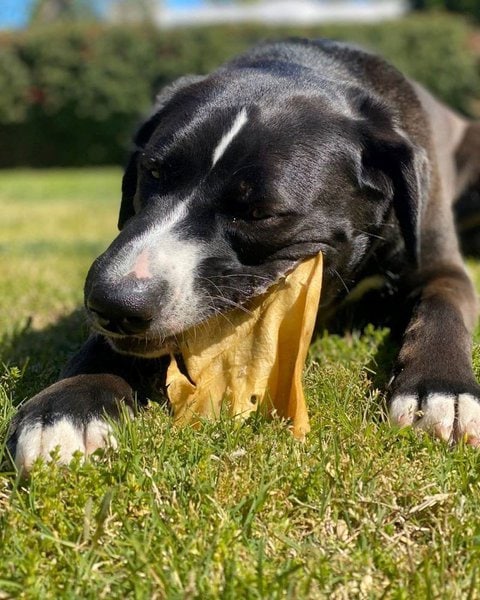
White markings are the most common patterns found on Labradors. They are not as common as the single solid-tone coat types. However, they are way more common than the other patterns that Labradors could possibly come in.
The markings occur mainly with Black Labradors and Yellow Labradors. The white fur, in these cases, is distributed mainly to the neck, chest, belly area, and paws. You may also find small, random patches of white fur on the Labrador’s snout.
3. Brindle
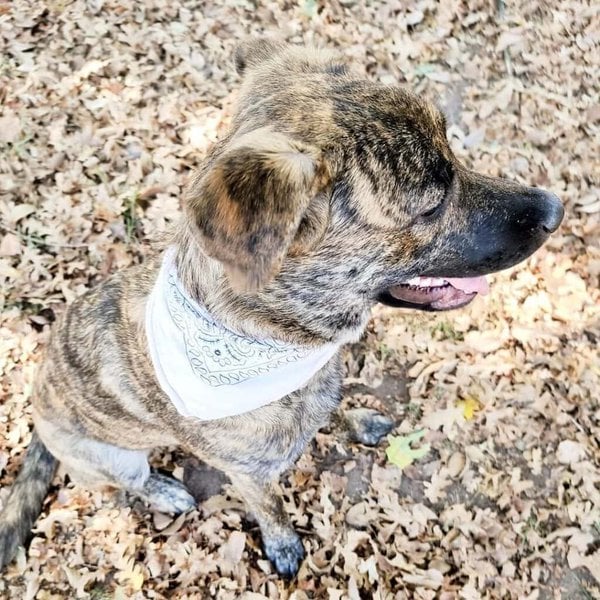
The brindle pattern on Labradors is characterized by dark stripe markings on an otherwise lighter-colored coat. They are best appreciated on Yellow Labradors or brown Chocolate Labradors due to the contrast.
The stripes are most pronounced over the back, torso, and limbs. On the Labrador’s face, the markings appear more as dark, somewhat linear patches.
It is also common to find Brindle Labradors with a combination of patterns, in which case white markings are the most common pairing.
2. Short Haired

According to the American Kennel Club breed standards for the Labrador Retriever, the short-haired variety is the only recognized and accepted coat type. Thus the fur is straight and coarse to the touch.
The short-haired Labrador has a double coat with a softer undercoat that offers protection from simple injuries. This also makes the Lab’s coat waterproof and weatherproof.
Interestingly, short-haired Labradors tend to shed a bit more than their longer-haired companions and thus need more attentive coat care.
1. Long Haired

The long-haired Labrador is the rarer of the two main coat types. The fur is medium-long and slightly wavy over most parts of the Lab’s body. However, their faces typically have shorter fur.
Despite long-haired Labradors being so gorgeous, the trait is considered undesirable and is a result of recessive genes in the dog breed. The fact that it is recessive means that two long-haired Labs have to breed to produce puppies with the same trait.
Related Questions
What Is The Rarest Labrador Color? When comparing the three classic variations, the Chocolate Labrador is the rarest among the rest, Black Labrador and Yellow Labrador. This is because the chances for the required chocolate gene combination to manifest are much lower. In general, blue and white are two of the rare Labrador colors, whereas the merle pattern is considered to be very rare in purebred Labs.
What Color Lab Sheds Least? There is no single Labrador color that sheds any more or less than the other varieties. The myth that Yellow Labradors shed more than black or chocolate ones is commonly busted from the fact that yellow fur strands are a lot more visible and easier to spot on clothes and furniture than the darker strands.
Which Color Labrador Is The Most Intelligent? The intelligence of a Labrador has nothing to do with its coat type, color, or pattern. According to Stanley Coren’s list, Labs are generally very smart and obedient dogs which makes them very easy to train and live with. However, there is this belief that Black Labs are the smartest. This is simply due to the fact that they are the most commonly found around the world.

